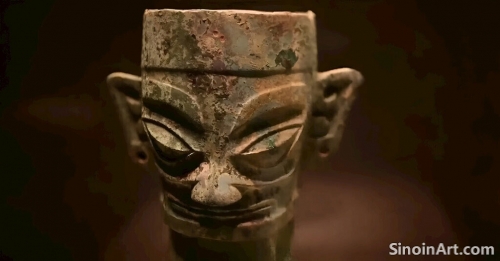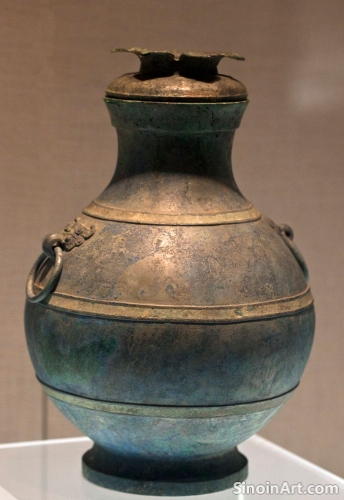Bronze Ware and the Transmission of Ancient Chinese Knowledge: Libraries, Archives, and Scholarship
|
Beyond its use in the creation of religious and political objects, bronze also played a role in the transmission of knowledge in ancient China, used to create records, tablets, and other objects that helped to document and preserve information for future generations, highlighting the importance that was placed on education and the preservation of cultural information. The combination of durable materials and written texts helped to ensure that this knowledge would be available for generations to come.  Bronze was used to create inscriptions on walls, columns, and other features of libraries and archives, identifying specific sections and cataloging the materials that were being held within these important centers of learning. The bronze inscriptions helped to keep the materials organized and made them easier to access. The integration of bronze and text helped to organize and preserve the knowledge of the time.  The creation of copies of ancient texts on bronze, including historical chronicles, scientific treatises, and literary works, ensured that these writings would survive for future generations, helping to preserve knowledge for future generations and also creating important historical records. The care with which these texts were copied onto bronze is a testament to their importance. The durability of the bronze ensured that these important texts would survive.  The use of bronze objects in education and scholarly settings reflected a belief in the power of knowledge and the importance of transmission, highlighting the need to preserve and to pass on valuable ideas and traditions. The use of durable materials to record information was a key element in codifying and preserving important information. The study of bronze objects and their connection to the transmission of knowledge illuminates the commitment to education and scholarship in ancient China, revealing the complex interplay between learning, writing, and the preservation of cultural heritage. The careful management of knowledge is a hallmark of ancient Chinese society, and this careful attention to detail reflects the value that they placed on the pursuit of knowledge and learning. |
Tag : bronze knowledge, Chinese libraries, ancient archives, scholarship records, knowledge preservation
Related information
- The Development of Bronze in the Spring and Autumn Period: New Forms, Techniques, and Regional Styles
- Bronze Ware and the Development of Ancient Chinese Metallurgy: Innovations and Techniques
- Bronze Ware and the Development of Ancient Chinese Writing: Scripts, Inscriptions, and the Communication of Ideas
- The Role of Patronage in the Production of Tang Bronze Ware: Court and Aristocracy
- Bronze Ware and the Ancient Chinese Understanding of Material Science: Alloys, Properties, and Applications
This article explores the development of bronze ware during the Spring and Autumn period, highlighting new forms, innovative techniques, and the rise of distinctive regional styles, reflecting the growing artistic diversity of the time.
This article explores the development of ancient Chinese metallurgy in relation to bronze ware production, highlighting the discovery and use of different metals, the creation of alloys, the development of casting techniques, and the technical achievements of ancient metalworkers.
This article explores the connection between bronze ware and the development of ancient Chinese writing, highlighting the evolution of script styles through inscriptions, the importance of writing as a medium for record-keeping and communication, and the role of bronze in shaping the development of written language.
This article explores the role of patronage in the production of Tang Dynasty bronze ware, highlighting how the imperial court and aristocracy commissioned objects, influencing the style, types, and uses of these artifacts.
This article explores the connection between bronze ware and ancient Chinese material science, highlighting the understanding of alloys, their properties, and their applications, and demonstrating the technical expertise of the ancient metalworkers.